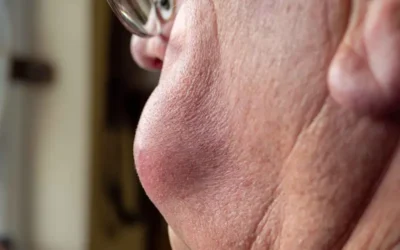Neurofibromatosis (NF) is a genetic condition that causes tumors to form in the brain, spinal cord, and nerves. It has no known prevention or cure. The symptoms of this condition are best treated by an interdisciplinary team of specialists including neurosurgeon, oncologist, neurologist, orthopedic surgeon, ophthalmologist, physical, occupational, and/or speech therapist, hearing specialist and geneticist. Documenting this disorder requires correct recording of all the present symptoms and the treatment provided. A clear understanding of this disease is crucial for your coding team to provide you with accurate medical coding services.
Let us take a look at the types, symptoms and treatment for this genetic disorder, along with their associated ICD-10 codes.
Types
Two types of NF disorder include type 1 (von Recklinghausen or Peripheral disease), which is characterized by multiple soft tumors on or under the skin and type 2 (bilateral acoustic NF), which is much less common than NF1, characterized by benign tumors on the cranial and spinal nerves.
- Q85.01 Neurofibromatosis, type 1
- Q85.02 Neurofibromatosis, type 2
While NF1 is more common and occurs in approximately one in 3,000 births, NF2 occurs in approximately one in 33,000 births.
Symptoms and Suitable Codes
NF1
Although the symptoms of this type is relatively mild, it may progress with complicating consequences, such as extreme pain, loss of vision, loss of hearing, problems related to heart and blood vessels, learning impairment, and ADHD.
- Presence of several (more than six) light brown café au lait spots
- L81.3 Café au lait spots
- Multiple freckles under the armpits or in the groin area
- L81.2 Freckles
- Tiny growths in the iris of the eye; Lisch nodules
- H21.9 Unspecified disorder of iris and ciliary body
- Tumors along the optic nerve; optic glioma
- D33.3 Benign neoplasm of cranial nerves
- Twisted spine; scoliosis
- M41.9 Scoliosis, unspecified
Other symptoms for NF1 includes appearance of two or more neurofibromas (pea-sized bumps) that can grow either on the nerve tissue, under the skin, or on many nerve tissues and enlargement or malformation of other bones in the skeletal system.
NF2
Symptoms of this type may develop during the teenage years. Based on the location of the tumor, symptoms can vary. Spinal tumors may result in numbness in other parts of the body.
- Tumors along the eighth cranial nerve; schwannomas
- D36.10 Benign neoplasm of peripheral nerves and autonomic nervous system, unspecified
- Meningiomas and other brain tumors
- D32.9 Benign neoplasm of meninges, unspecified
- Ringing noises inside the ear, tinnitus
- H93.19 Tinnitus, unspecified ear
- Hearing loss and/or deafness
- H91.8X9 Other specified hearing loss, unspecified ear, respectively
- Cataracts at an early age
- H26.009 Unspecified infantile and juvenile cataract, unspecified eye
- Spinal tumors
- D16.6 Benign neoplasm of vertebral column
- Poor balance
- H81.399 Other peripheral vertigo, unspecified ear
- Muscle wasting and atrophy
- M62.50 Muscle wasting and atrophy, not elsewhere classified, unspecified site
Diagnosis and Treatment
Neurofibromatosis can be diagnosed using a number of tests, including magnetic imaging, X-rays, computerized tomography, and blood tests, family history, eye tests, genetic testing and biopsy or neurofibromas. Diagnosing NF1 in children requires the presence of at least two symptoms. NF2 is diagnosed through hearing tests as well as imaging to look for tumors in and around the auditory nerves, spinal cord, or brain stem. Genomic sequencing that can be used to test for NF1 genetic mutations can be documented with
- CPT code 81408 Molecular pathology procedure, Level 9
As there is no cure for this disorder, the only option is to manage the symptoms. Even though surgery is done to remove tumors, risk is more for them to regenerate. For NF2 patients, the FDA-approved auditory brainstem implant is available to restore hearing. Physicians busy treating such complex conditions can consider medical billing outsourcing to meet their claim submission tasks.



